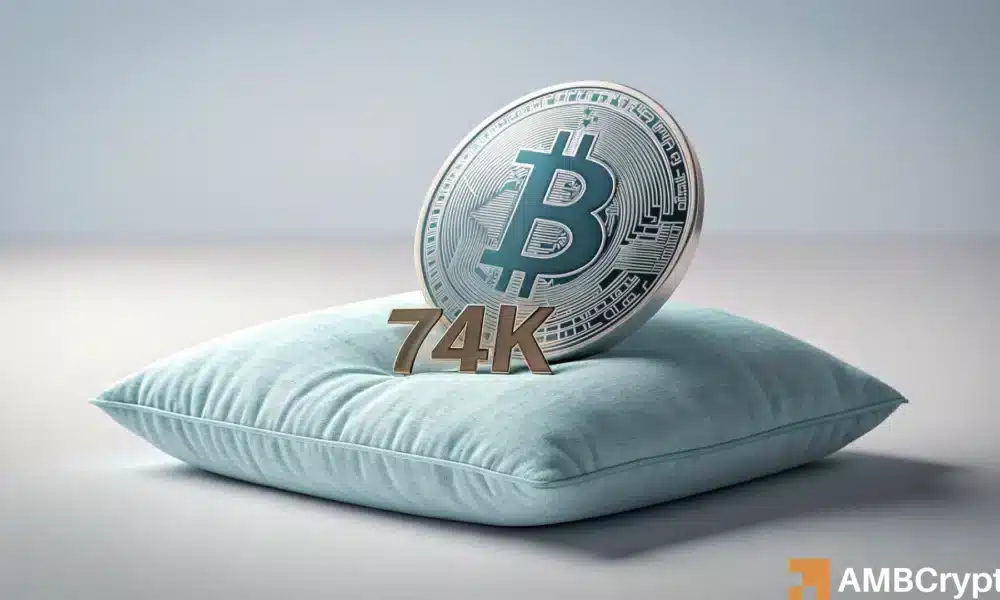- 74% of Ethereum is held at a loss, signaling weak market structure and growing sell-side pressure.
- Buy-side conviction remains low, leaving Ethereum range-bound unless strong volume and sentiment shift higher.
Ethereum [ETH] is facing mounting pressure as on-chain data reveals a sharp deterioration in holder profitability, adding weight to the theory that its price is trapped under a massive resistance wall.
Data from IntoTheBlock shows 73.97% of ETH supply—roughly 106.75 million coins—is now held at a loss. In contrast, only 24.07% of ETH remains in profit.
This imbalance paints a bearish picture of current market structure, with few holders sitting on profitable positions and many still anchored above the current trading range.
A market held hostage
Nearly 45% of Ethereum’s supply—66.29 million ETH—was bought between $2,194 and $2,571, on-chain data shows.
This range, held by 12.28 million wallets, has an average cost basis of $2,381.85, forming a strong resistance zone.
On the flip side, support looks fragile.
Just 2.83 million ETH, or 1.96% of supply, is currently “At the Money.” These holdings, purchased between $1,786.34 and $1,791.11, are spread across 95,470 addresses—signaling weak support at current levels.
With no strong buyer conviction around $1,789, price could drift freely — in either direction. Until stronger demand materializes, price could drift—but gravity favors the bears.
The persistent $2,200–$2,580 wall has reappeared in successive data runs. Each day reaffirms its size and strength.
Yet questions remain — Is this resistance zone truly unbreakable, or is it more of a psychological barrier?
700k ETH gone in two months
Supporting the bearish view is Ethereum’s Exchange Netflow data, pulled from CryptoQuant, which shows a marked trend of large-scale withdrawals.
Reportedly, there have been outflows exceeding 300,000 ETH in February and March 2025.
That includes spikes of 400K ETH on the 17th of February and 409K ETH on the 7th of March. These withdrawals aligned with steep price drops, suggesting investors removed assets to avoid selling into weakness.
While such withdrawals can indicate long-term holding, in a falling market they also reflect low appetite for spot exposure. In contrast, inflows have been rare and weak.
A 166,065 ETH inflow during the January-end failed to reverse price momentum, signaling limited buying interest.
Losses stack as hopes fade
Metrics from Santiment show similar signals.
The Network Realized Profit/Loss chart shows consecutive realized losses. For example, $922.48 million on the 3rd of February and $788.36 million on the 7th of March.
Profits mostly appeared in early January, peaking at $580.15 million on the New Year’s. The NRPL has remained negative since then.
This dominance of losses aligns with the GIOM reading that most holders are underwater. Analysts call it capitulation behavior, reflecting reduced short-term confidence.
Ethereum remains under pressure with nearly 74% of its supply held at a loss, mostly between $2,200 and $2,580.
This zone forms a major resistance barrier, reinforced by weak support at current prices, continued exchange outflows, and persistent realized losses.
While the data confirms strong overhead resistance, it doesn’t guarantee it will hold. A significant breakout is still possible if met with enough volume and demand.
Until then, Ethereum is likely to stay stuck below $2,200, with upside capped by seller pressure and limited buyer interest.
















No comments yet